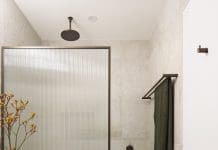If you’re on the hunt for a new air conditioner, you’d know that modern split systems do more than just heating and cooling. There’s a whole range of nifty features and settings now available. But with great features comes a greater price tag, too. Any discerning split system shopper will want to know what features a system comes with, and if they’re worth the extra expense.
We’ve spoken with some air conditioning experts to break down these features and whether they’re worth it!
Related article: The cost of running ducted gas heating — is it worth it?
Related article: 5 harmful things plumbers wish you would stop doing

Words by Metropolitan Plumbing, Electrical & Air Conditioning
1. Operating modes
More than just an on/off button, air conditioners tend to come with many operating modes. Even budget air conditioning systems will have several modes to choose from!
The most common modes you’ll come across include:
- cool mode: cools a room
- heat mode: warms a room
- dry mode: decreases a room’s humidity faster than cool mode
- fan mode: only runs the fan and not the compressor that does the heating and cooling
- sleep mode: slowly raises the thermostat to compensate for the decreasing temperature outside
- turbo mode: quickly cools a room but will use more energy to do so
- energy saver mode: increases energy efficiency but isn’t as effective at cooling/heating
- quiet mode: the compressor and fan run slower so the unit is quieter.
Verdict: Take a pass! Even with all these fancy modes, most people tend to use only heating and cooling mode. Unless a mode will be especially useful for your home, such as a quieter energy efficient mode for a nursery, it’s not worth spending extra money simply on a split system air conditioner with a long list of modes.
2. Adjustable/oscillating louvres
Split system air conditioners have louvres that direct airflow around a room. These generally oscillate up and down on almost all units by default.
Most systems will allow you to control these oscillations with the remote. Some even let you direct air left or right so it moves where it is needed more easily.
Verdict: You’d be hard-pressed to find a split system air conditioner on the market today that doesn’t have adjustable/oscillating louvres. This basic feature helps to heat or cool a room more effectively, and experts agree it is definitely useful.

3. Automatic de-icing
When the temperature outside reaches near freezing, moisture in the air can condense on the outdoor unit. It can then freeze on the heat exchanger as the fan blows air across it. Ice buildup on the heat exchanger will reduce airflow across it, in turn reducing its energy efficiency.
Depending on how much ice has built up, this can seriously impact your air conditioner’s efficiency. It can even cause damage in some cases. This is where an automatic de-icing feature comes into play.
When your air conditioner detects ice on the outdoor unit the de-icing mode starts. Most types of air conditioners will switch into their cooling mode causing the heat exchanger to heat up. A hot heat exchanger causes the ice to melt.
Verdict: In most regions of Australia, this is one of those air conditioner features you won’t need! But with the recent snowfall in NSW and serious sub-zero temperatures elsewhere across Australia… it may just be something worth having. If you live in a cooler area, save yourself the trouble of having an air conditioning technician out for repairs or a full replacement due to damage from ice on your air con with this feature.
4. Restart delay
While they might just be an appliance, air conditioners need to rest between work, too. This is why most split system air conditioners are fitted with a restart delay feature.
Reverse cycle air conditioners use refrigerants to heat and cool. This process relies on pressure changes of the refrigerant gas. Your air con needs 5 minutes for the pressure to equalise again before you can turn it back on.
Starting it again before the pressure is equalised could damage the compressor. To avoid this, many manufacturers include a restart delay feature. This prevents air conditioners from heating or cooling before the pressure has equalised.
Verdict: The experts all agree, you need this air conditioner feature. This protects your unit from preventable damage and saves you from potentially very costly repairs. Thankfully, most modern split systems come equipped with this feature anyway.
5. Human presence sensor
Many newer-model air conditioners come with a human presence sensor function. This detects when someone is in the room or when they leave, where it automatically switches to an economy or energy-saving mode. This function goes by many different names and the way it works differs from brand to brand.
Verdict: You’re better off turning your air conditioner off when you leave the room. That said, this feature can be great for those of us who are a bit forgetful and want to keep energy bills down.

6. Air filters and air-purifying features
All air conditioning systems come equipped with a dust filter on the inside unit. This traps dust in the air and prevents it from entering your home and clogging up the indoor unit.
For asthma and allergy sufferers, however, a simple dust filter doesn’t improve air quality much. To effectively filter out contaminants from the air such as smoke and bacteria, you need HEPA filters. These can’t be fitted to domestic air conditioners though.
This is where additional air quality features on your air conditioner come in. Many new air conditioning models come with ionisation or photocatalytic filters. These aren’t filters, per se. Rather, they’re chemical processes that trap or break down pollutants.
Until air conditioning systems have been redesigned to allow for HEPA filters, these air-purifying features are the next best thing.
Verdict: If you or your family suffer from asthma and allergies, anything that helps to improve air quality can make a noticeable difference in comfort. Even if you’re relatively healthy, if you live in a high-density city these features can help regardless. So if it’s within your budget, this is definitely something to consider!
7. Smartphone connectivity and remote control
Just about everything is smart nowadays, your air conditioning included! When it comes to installing a new air conditioning unit, you’ll need to consider whether these smart features are worth it.
Master the elements all from the comfort of your couch and with just a tap of your finger. All you need is to connect your air con to your Wi-Fi and install the associated app!
This means you can even control your home’s temperature from anywhere in the world via the app. This is handy if you’re at work and want to warm your home while you make the commute back or you’ve misplaced the remote.
Many apps allow you to set timers for your air conditioner, too. You can set it to turn on regularly at set times in the day when you know you’ll need it.
Verdict: This convenient feature is a modern day luxury and worth the extra spend.
Are there any other air conditioner features you’re considering but unsure if they’re worth the cost? Pop a comment below and we’ll get back to you asap!







